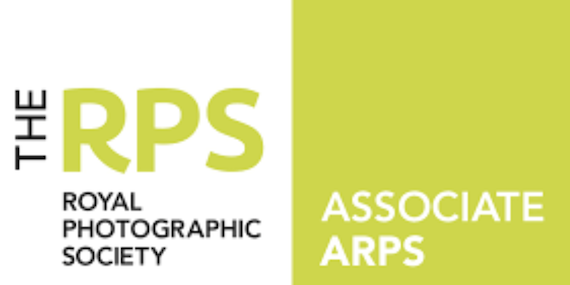New York City, 1966
Lee Friedlander is an American photographer and artist. In the 1960s and 1970s, Friedlander evolved an influential and often imitated visual language of urban "social landscape," with many of his photographs including fragments of store-front reflections, structures framed by fences, posters and street signs.
https://fraenkelgallery.com/artists/lee-friedlander
https://fraenkelgallery.com/artists/lee-friedlander
https://erickimphotography.com/blog/2013/03/29/10-lessons-lee-friedlander-has-taught-me-about-street-photography/
https://youtu.be/ZF86_gWDduw
https://www.google.com/search?q=lee+friedlander&tbm=isch&ved=2ahUKEwio7KHOqYPoAhWVw4UKHcI6BhUQ2-cCegQIABAA&oq=Lee+Friedlander&gs_l=img.1.0.35i39j0j0i67j0l7.22183.22183..23802...0.0..0.63.63.1......0....1..gws-wiz-img.Q_DuNu2AS0Y&ei=Me9gXuiPDJWHlwTC9ZioAQ&bih=1260&biw=1640
THE EXHIBIT THAT TRANSFORMED PHOTOGRAPHY
By Philip Gefter
At the end of his career, John Szarkowski, the legendary curator of photography at the Museum of Modern Art, quipped that Arbus, Friedlander, and Winogrand sounded more like the name of a law firm than like the names of the artists he first exhibited in 1967, in his influential show “New Documents.” The exhibition—which is the subject of a new book, “Arbus Friedlander Winogrand: New Documents, 1967,” published by MoMA, to mark the show’s fiftieth anniversary—was modest by today’s standards: small, framed black-and-white pictures by Diane Arbus, Lee Friedlander, and Garry Winogrand, arranged in two galleries on the museum’s ground floor. The works on display possessed a casual, offhand quality; the subject matter was so apparently random and ordinary—a man and a woman heading in opposite directions through a set of glass doors (Friedlander’s “Street Scene, 1963”); a nude middle-aged couple and their daughter sprawling leisurely on the grass beside a country road (Arbus’s “Family Evening, Nudist Camp, Pennsylvania, 1965”)— that the public had a difficult time comprehending what the pictures were trying to say.
Critics, too, were sceptical. “The observations of the photographers are noted as oddities in personality, situation, incident, movement, and the vagaries of chance,” Jacob Deschin wrote in a Times review. He could not identify the subject of documentation in any of the works on display, or any discernable point to the show. In the past, the photographic practice had typically been defined by its ability to provide proof, or documentation, of a specific subject: Walker Evans’s photographs of Southern migrant workers, for example, conveyed almost forensic objectivity and clear-eyed purpose; whether August Sander’s portraits of Germans before the rise of Hitler, Lewis Hine’s photos of child labourers, Aaron Siskind’s “Harlem Document,” or Helen Levitt’s pictures of children on the streets of New York, photographers were known primarily for their visual description of a particular subject, often with the underlying purpose of exposing the world’s ills and generating interest in fixing them.
In a statement posted on the gallery wall, Szarkowski described “New Documents” as a showcase for a new kind of photograph, from a generation of artists who had embraced an almost existential attitude toward the medium, adopting “the documentary approach toward more personal ends.” This new photographic style, pioneered a decade before, by Robert Frank, in “The Americans,” combined the un-self-conscious informality of the family snapshot with the authenticity of documentary photography and the immediacy of a news picture. For these new photographers, the camera was not only a tool for recording and describing the world but for recognizing and examining their personal interactions with it. Their aim, Szarkowski wrote, “has not been to reform life, but to know it.” As Winogrand famously put it, “I photograph to see what things look like photographed.”
By Philip Gefter
At the end of his career, John Szarkowski, the legendary curator of photography at the Museum of Modern Art, quipped that Arbus, Friedlander, and Winogrand sounded more like the name of a law firm than like the names of the artists he first exhibited in 1967, in his influential show “New Documents.” The exhibition—which is the subject of a new book, “Arbus Friedlander Winogrand: New Documents, 1967,” published by MoMA, to mark the show’s fiftieth anniversary—was modest by today’s standards: small, framed black-and-white pictures by Diane Arbus, Lee Friedlander, and Garry Winogrand, arranged in two galleries on the museum’s ground floor. The works on display possessed a casual, offhand quality; the subject matter was so apparently random and ordinary—a man and a woman heading in opposite directions through a set of glass doors (Friedlander’s “Street Scene, 1963”); a nude middle-aged couple and their daughter sprawling leisurely on the grass beside a country road (Arbus’s “Family Evening, Nudist Camp, Pennsylvania, 1965”)— that the public had a difficult time comprehending what the pictures were trying to say.
Critics, too, were sceptical. “The observations of the photographers are noted as oddities in personality, situation, incident, movement, and the vagaries of chance,” Jacob Deschin wrote in a Times review. He could not identify the subject of documentation in any of the works on display, or any discernable point to the show. In the past, the photographic practice had typically been defined by its ability to provide proof, or documentation, of a specific subject: Walker Evans’s photographs of Southern migrant workers, for example, conveyed almost forensic objectivity and clear-eyed purpose; whether August Sander’s portraits of Germans before the rise of Hitler, Lewis Hine’s photos of child labourers, Aaron Siskind’s “Harlem Document,” or Helen Levitt’s pictures of children on the streets of New York, photographers were known primarily for their visual description of a particular subject, often with the underlying purpose of exposing the world’s ills and generating interest in fixing them.
In a statement posted on the gallery wall, Szarkowski described “New Documents” as a showcase for a new kind of photograph, from a generation of artists who had embraced an almost existential attitude toward the medium, adopting “the documentary approach toward more personal ends.” This new photographic style, pioneered a decade before, by Robert Frank, in “The Americans,” combined the un-self-conscious informality of the family snapshot with the authenticity of documentary photography and the immediacy of a news picture. For these new photographers, the camera was not only a tool for recording and describing the world but for recognizing and examining their personal interactions with it. Their aim, Szarkowski wrote, “has not been to reform life, but to know it.” As Winogrand famously put it, “I photograph to see what things look like photographed.”
